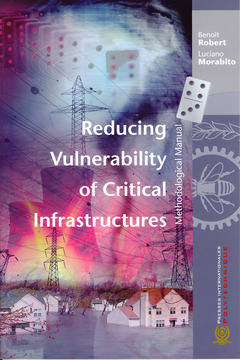Critical infrastructures are systems that provide the basic resources society requires, such as drinking water, transportation, telecommunications and energy. These resources are used by the population but also by other critical infrastructures. Given the high level of interdependence between critical infrastructures, failure of a single element can cause a domino effect with negative consequences for all other critical infrastructures and therefore the population. The potentially dramatic consequences of such failures have been highlighted by recent catastrophic situations, both at the national — the 1998 ice storm in southern Quebec and international levels, the earthquake-related Fukushima Daiichi nuclear disaster in Japan in March 2011. Reducing Vulnerability of Critical Infrastructures results from years of exceptional collaboration between multiple public and private partners. It offers a concrete methodology for identifying and assessing interdependencies between critical infrastructures. Using an original approach based on the consequences of failures rather than their causes, the methodology enables the creation of tools that integrate spatial and temporal parameters for anticipating and managing domino effects resulting from the failure of a given infrastructure in order to reduce the vulnerability of all infrastructures. This book is primarily aimed at municipal risk managers, government services and essential services suppliers but also offers academics and students in management and engineering a new theoretical approach to risk.



